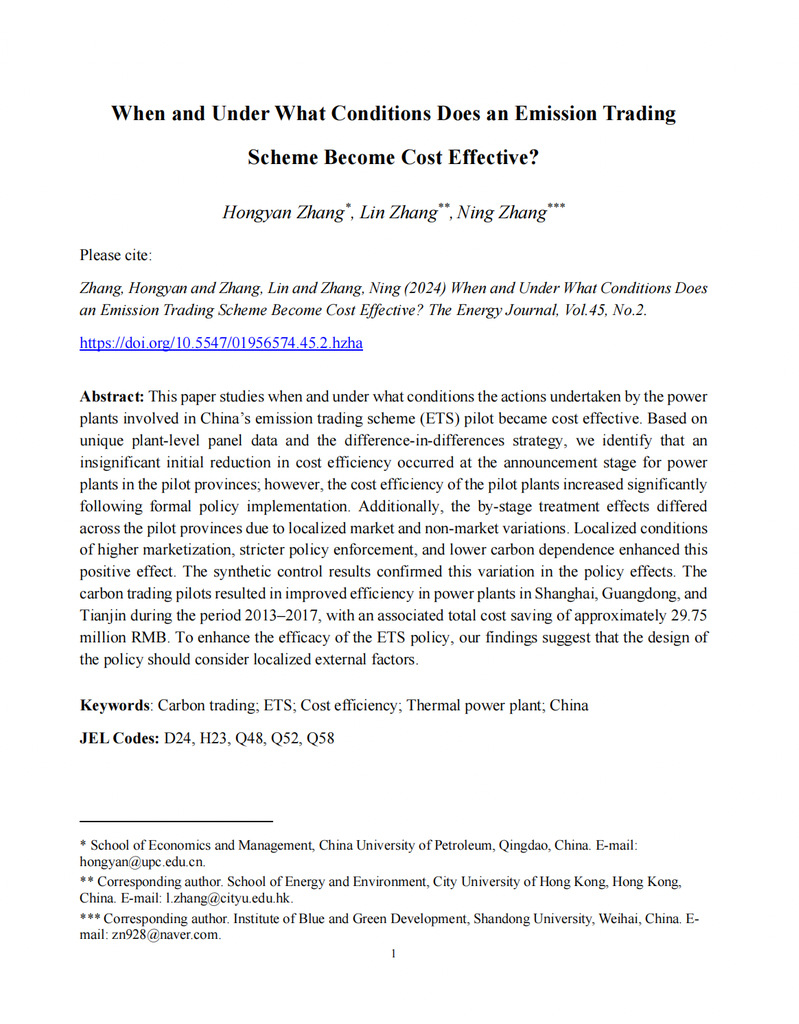This paper studies when and under what conditions the actions undertaken by the power plants involved in China’s emission trading scheme (ETS) pilot became cost effective. Based on unique plant-level panel data and the difference-in-differences strategy, we identify that an insignificant initial reduction in cost efficiency occurred at the announcement stage for power plants in the pilot provinces; however, the cost efficiency of the pilot plants increased significantly following formal policy implementation. Additionally, the by-stage treatment effects differed across the pilot provinces due to localized market and non-market variations. Localized conditions of higher marketization, stricter policy enforcement, and lower carbon dependence enhanced this positive effect. The synthetic control results confirmed this variation in the policy effects. The carbon trading pilots resulted in improved efficiency in power plants in Shanghai, Guangdong, and Tianjin during the period 2013–2017, with an associated total cost saving of approximately 29.75 million RMB. To enhance the efficacy of the ETS policy, our findings suggest that the design of the policy should consider localized external factors.
主要创新点:
识别了碳市场政策作用下发电厂成本效率演进规律,明细了发电厂主体运营策略,为碳市场机制成本效益优化设计提出对策建议。

原文链接:https://doi.org/10.5547/01956574.45.2.hzha
Edited:Xie Danyang



